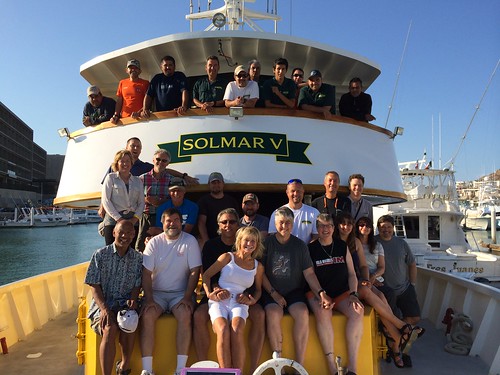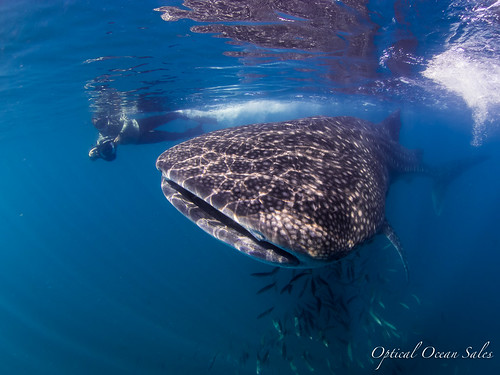One of the more common questions we get asked, particularly from newer underwater photographers is “I am going to shoot some photos and some video; do I really need a strobe and a focus/video light or can I get buy with just a light?”
To answer the question I set up some tests both in the studio and while diving from the Conception at San Miguel Island (Channel Islands, CA). In the studio setup shown below, I set up a “mandarin fish” in a bed of rocks. The fish is about 2 inches long. For the test in the studio and in the water, I was shooting an Olympus OMD-EM5 in a Nauticam NA-EM5 housing with 2 Sea and Sea YS-D1 strobes using the 12-50 Olympus lens in the Nauticam focus port. For continuous lighting, I used either one or two Light and Motion Sola 1200s, iTorch Pro 6s or Nocturnal Lights M700i.
 |
| Figure 1 –Setup in Studio |
Figure 1: The setup at left shows two strobes and a single focus light; for the case of two lights the lights were placed where the strobe are shown.
 |
| Figure 2 – 1/250th, f/22, ISO 200, 2 YS-D1 Strobes. |
Figure 2: For a baseline, I shot my mandarin fish at 1/250th of a second and f/22 at the native ISO of the camera, 200. The photo above shows the results of this shot with both YS-D1 strobes set at 0 power. A flash meter reading suggested F/18 for this shot and notice the background is a bit dark but overall this is well exposed and notice that the depth of field is quite large.
One advantage of shooting with strobes is that you can have exquisite control of the depth of field by manipulation of the aperture. Below is a shot of the fish at 1/250th and f/6.3 (the minimum of this lens). The strobes were shot at minimum power for the strobe on the left and 1 notch above minimum power for the strobe on the right allowing for adjustment of the darkness of the shadow on the left rear of the photo.


 Continuing north towards La Paz, we dove La Reina and Swanee Rock, both teaming with life. Diving in the Sea of Cortez is very "fishy" with huge schools of grunts, snappers, goatfish and others on nearly every site. Friendly pandemic green morays also greet you from almost every hole. Corals are mostly hard, and not all that colorful, so the aquatic fish life is what you go for. Yellowtail sturgeon fish, puffer fish of every variety, colorful hawk fish, and grouper abound on nearly every site.
Continuing north towards La Paz, we dove La Reina and Swanee Rock, both teaming with life. Diving in the Sea of Cortez is very "fishy" with huge schools of grunts, snappers, goatfish and others on nearly every site. Friendly pandemic green morays also greet you from almost every hole. Corals are mostly hard, and not all that colorful, so the aquatic fish life is what you go for. Yellowtail sturgeon fish, puffer fish of every variety, colorful hawk fish, and grouper abound on nearly every site.
